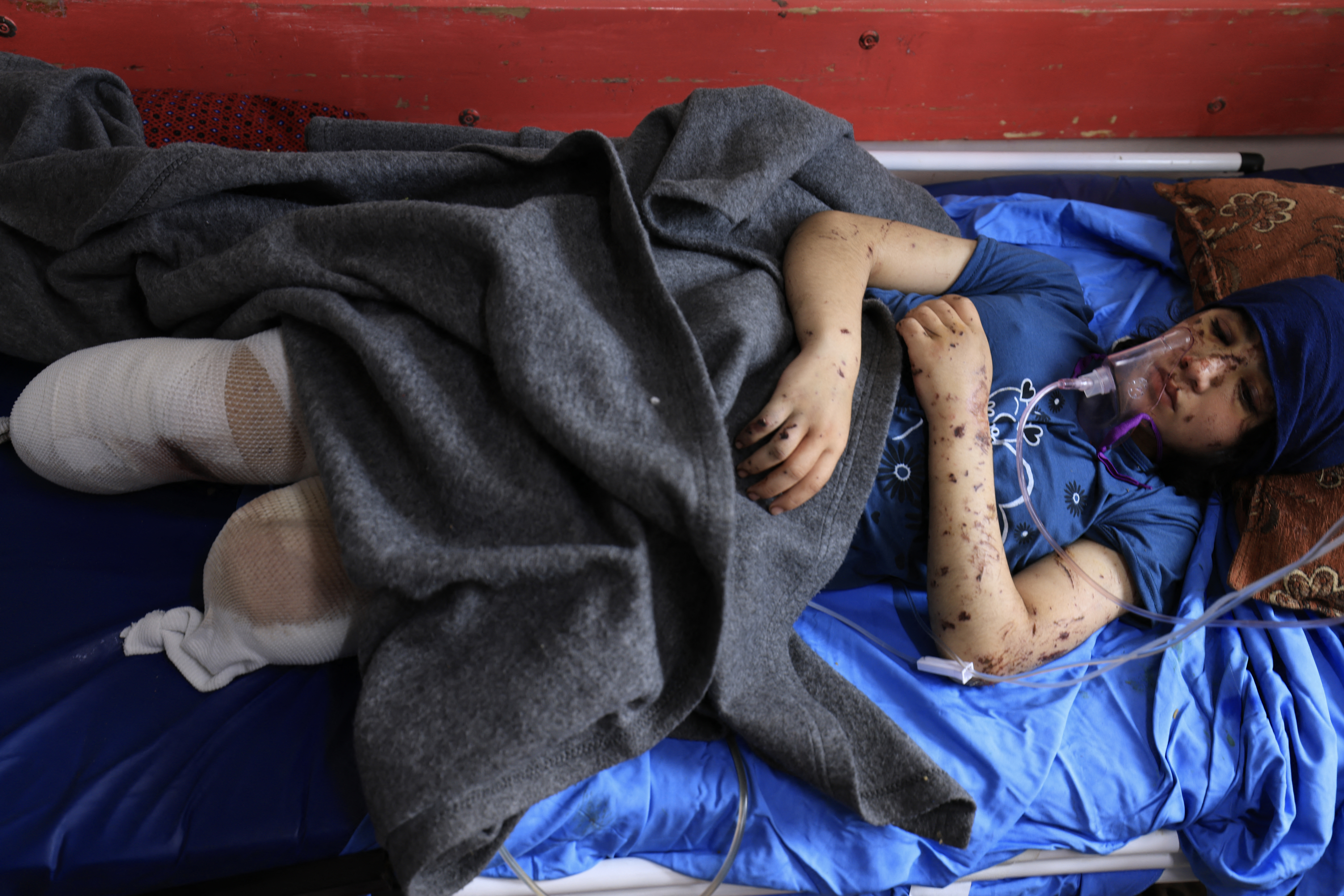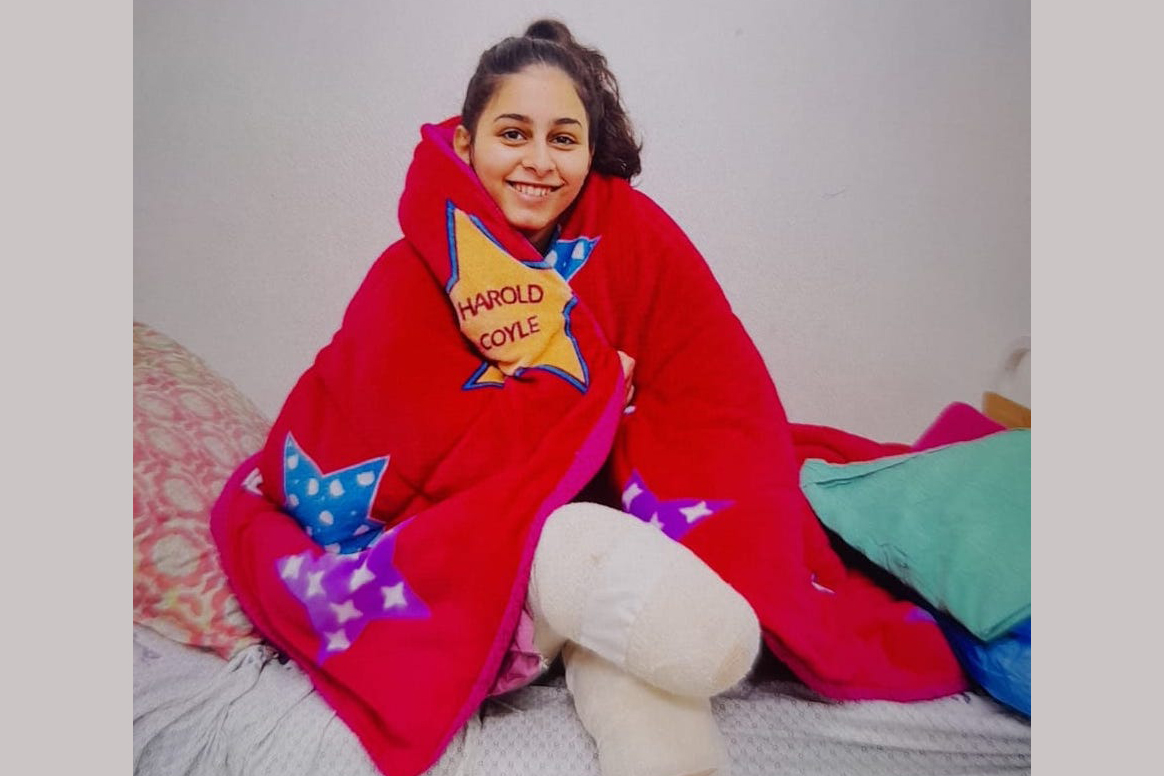
Ahed Bseiso was disoriented, shocked, and numb to the immense pain that would soon take over after she was wounded by Israeli shelling on her family home in northern Gaza.
“All I could see was white fog … For a second, I thought I was dead,” Ahed told Al Jazeera, reliving the events of December 19.
That day, following her routine since October 7, when Israel launched its most brutal assault on Gaza to date, the 17-year-old university student and her older sister Mona climbed to the sixth floor of their building at 10:30am.
They went up there to call their father, who lives overseas. They tried to talk to him daily to tell him they were still alive amid a siege, intense bombardment, and a severe lack of essential supplies.
Repeated telecommunication blackouts and jamming in Gaza mean many have to climb onto a roof to catch a signal, find signal boosters, or use eSIM cards connected to any regional telecom carrier.
Ahed said she noticed an unusually large Israeli tank outside the building, but she did not give it much thought as their home had been encircled by army vehicles after a truce between Israel and Hamas came to an end in November.
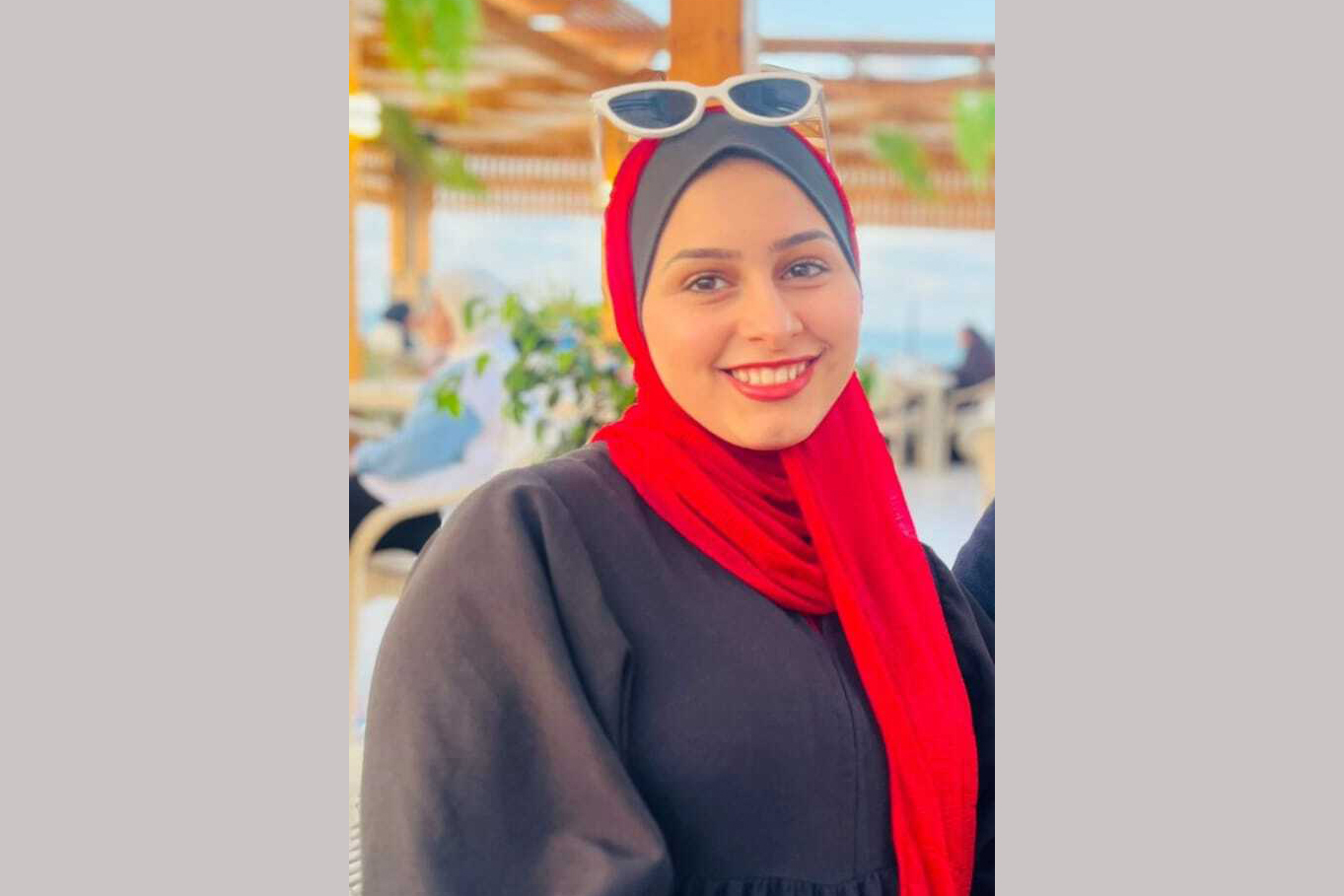
She sat down and got ready to dial her father’s number.
‘I managed to say “I’m alive”‘
“I crossed my legs and all of a sudden, I was upside down,” she said.
Ahed had lost a limb – almost her entire right calf – and was bleeding profusely.
Her shock was so severe that she was silent, and so was her sister – she later realised “Mona was afraid to call out for me in case I didn’t respond”.
“Eventually, as I gathered what had just happened, I managed to say: ‘I’m alive’.”
Ahed’s male cousins rushed to carry her downstairs. She remembers looking down and shouting, asking her cousins if her leg was still there because she could not see it.
“All my cousin did was cover my eyes,” she recalled.
The only place they could set Ahed down was on the dining table, where her mother had been kneading bread dough earlier, a common sight in Gaza homes as Israel’s complete siege made food and basic commodities scarce.
Someone ran to get her uncle, Hani, an orthopedist and the only doctor among the 30 relatives staying in the family’s building.
Hani had sent his wife and four children out of the enclave at the beginning of the offensive, while he stayed.
And so, he found himself looking down at his niece’s severed leg and knowing he had to save her, without medical supplies, anaesthesia, or even clean gauze.
In Gaza today, medics have to carry out procedures with nothing, not even pain control, as a result of the severe shortages imposed by the siege.
Hani needed to act on a difficult, yet obvious choice: amputate what was left of the lower leg and quickly stitch up the artery so his niece would not bleed to death.
“I had nothing. I remembered my briefcase was in my room, so I asked my nephews to grab it … There was nothing in there except for some unsterilised gauze,” Hani said.
‘I stayed so Ahed can live’
Hani did not know how he would clean the wound or control the bleeding, a seemingly impossible task without sutures.
All the while, Gaza’s largest medical facility, al-Shifa Hospital, was “five minutes away by car” but was both unreachable and out of service due to the fighting, Hani said.

Like most hospitals across the enclave, al-Shifa had been attacked and raided in November, forcing thousands of wounded and displaced Palestinians there to flee and putting the hospital out of service.
Hani looked around the room desperately, seeking anything to make the dreadful process a bit more manageable. At the kitchen sink, he saw a sponge and container filled with dish soap.
“I started to clean the wound but felt Ahed’s eyes piercing me. She begged me not to cut the rest of her leg off,” Hani said.
His heart was breaking and tears poured down his face, knowing what he had to do while Ahed was fully conscious.
“I wondered what person could bear the pain of an amputation without anaesthesia,” Hani said.
And so he operated on his niece with a kitchen knife and used a needle and thread from a sewing kit to stitch together the largest artery.
When asked how she was able to bear the pain, Ahed said a strange feeling of calm took over.
“I was just reciting verses from the holy Quran the entire time,” she said.
To redress her wounds, the family had to wash the gauze in hot water and lay it out to dry so her uncle could put it back on her leg.
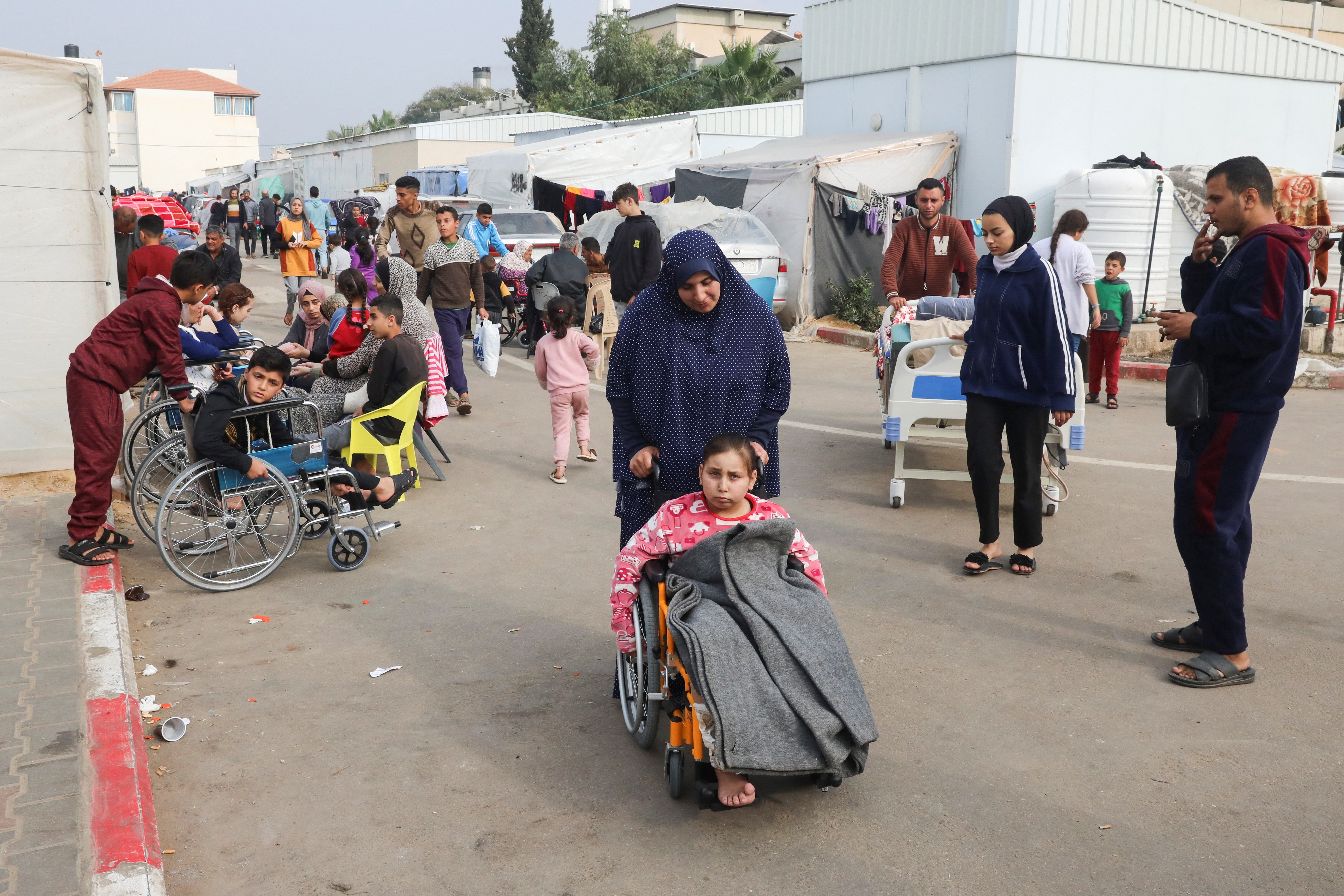
Knowing Ahed was prone to infection, Hani said he took “every antibiotic pill and painkiller in the house,” and rationed it out to her, mostly on an empty stomach because there was no food.
It wasn’t until five days later that Hani was able to move her to a medical facility – one day after Israeli tanks withdrew from the area. There, Ahed underwent several surgeries, including one to mend her broken left leg.
But it is still not enough, Hani said.
“She needs so much more … cosmetic repair surgery for her amputated leg, an artificial limb,” Hani said.
“I could have left with my wife and kids, but God made me stay. I stayed so Ahed can live.”
Ahed is one of a generation of young amputees emerging from the enclave as a result of relentless Israeli attacks.
According to the United Nations Children’s Fund, more than 10 children have lost one or both of their legs a day in Gaza since October 7.
That is more than 1,000 children.
Amputations are ‘standard practice’
Medical professionals say many of those killed in Gaza since October 7 could have been saved if they had been able to reach a hospital.
Abed, an orthopaedic doctor with Doctors Without Borders – also known as Medecins Sans Frontieres (MSF) – said medics in Gaza have come to rely on sedating patients amid a lack of anaesthesia.
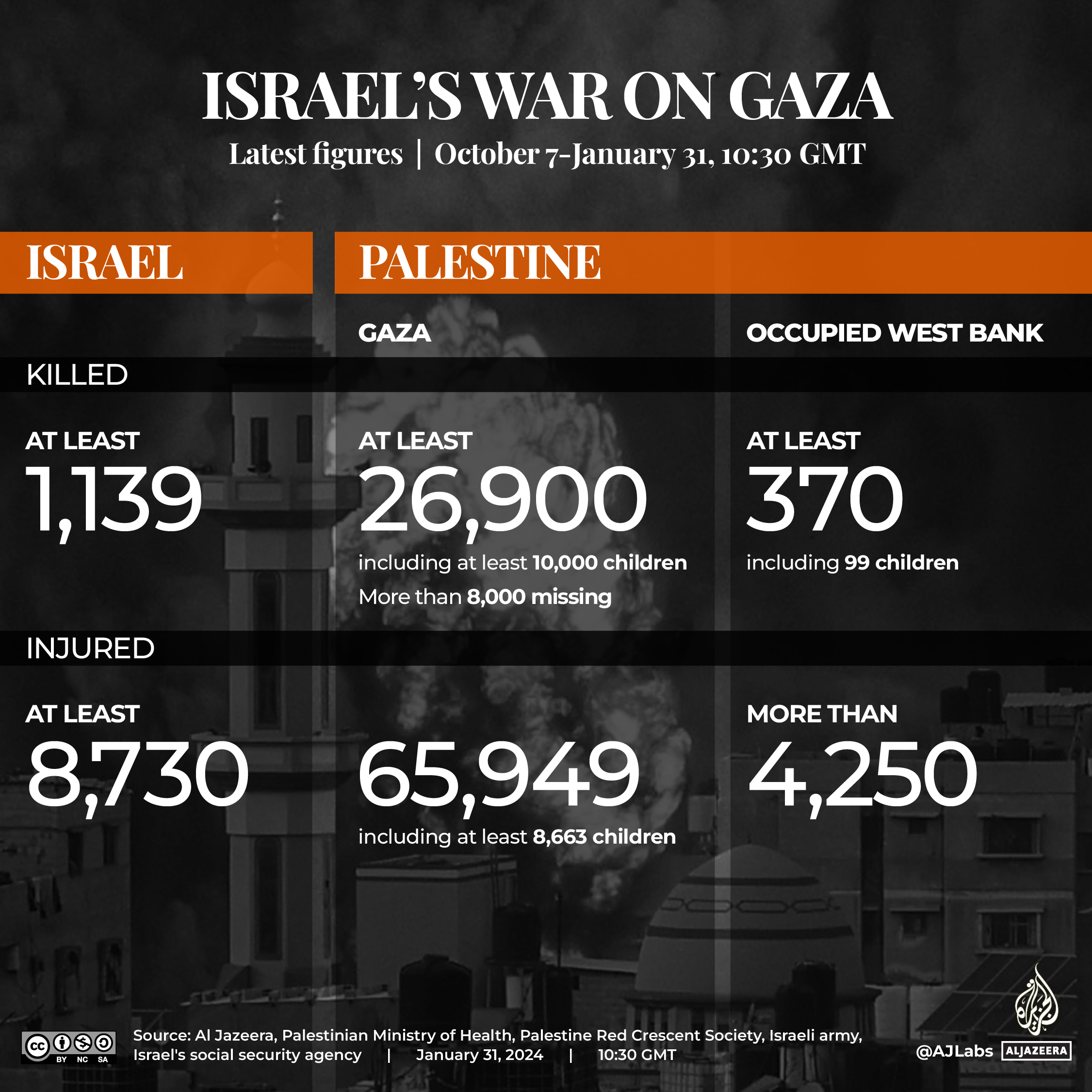
“We have a shortage of all kinds of drugs,” said Abed, who has been working at the Rafah Indonesian Field Hospital and asked that only his first name be used due to safety concerns.
“We depend on painkillers like paracetamol and we try local anaesthetic to reduce pain,” he said.
According to Abed, patients undergo “traumatic amputation” daily, adding that most patients are children.
When a hospital has an influx of injured people, it can take hours for someone to get to the operation theatre, which makes salvaging a limb impossible and amputation necessary “to save the life of the patient”, he said.
According to the Ministry of Health in Gaza, Israel has killed nearly 27,000 people and wounded some 65,000 others in its attacks on Gaza since October 7. Nearly a quarter of injuries are among children, the ministry said.
Ahed said she is forever changed. Before the offensive, she was enrolled to study pharmacy. But now she cannot stand “anything to do with medicine” because of what she has been through.
“I’m going to change my major,” she said. “I’m going to be an interior designer and prove to the world that I can still lead a normal life despite my physical disability.”
